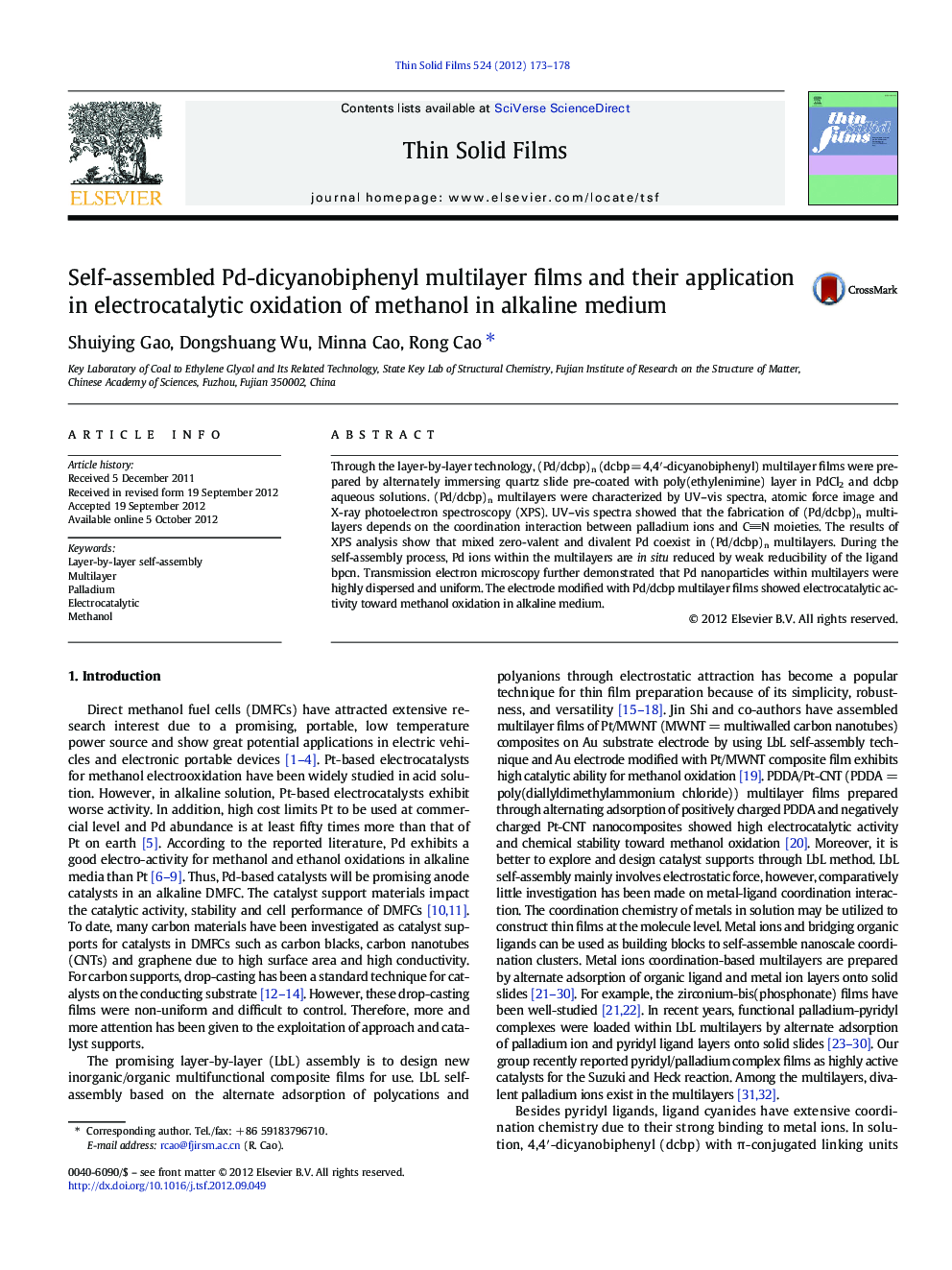| Article ID | Journal | Published Year | Pages | File Type |
|---|---|---|---|---|
| 1666574 | Thin Solid Films | 2012 | 6 Pages |
Through the layer-by-layer technology, (Pd/dcbp)n (dcbp = 4,4′-dicyanobiphenyl) multilayer films were prepared by alternately immersing quartz slide pre-coated with poly(ethylenimine) layer in PdCl2 and dcbp aqueous solutions. (Pd/dcbp)n multilayers were characterized by UV–vis spectra, atomic force image and X-ray photoelectron spectroscopy (XPS). UV–vis spectra showed that the fabrication of (Pd/dcbp)n multilayers depends on the coordination interaction between palladium ions and CN moieties. The results of XPS analysis show that mixed zero-valent and divalent Pd coexist in (Pd/dcbp)n multilayers. During the self-assembly process, Pd ions within the multilayers are in situ reduced by weak reducibility of the ligand bpcn. Transmission electron microscopy further demonstrated that Pd nanoparticles within multilayers were highly dispersed and uniform. The electrode modified with Pd/dcbp multilayer films showed electrocatalytic activity toward methanol oxidation in alkaline medium.
► Layer-by-layer self-assembly ► The films (Pd/dcbp)n (dcbp = 4, 4′-dicyanobiphenyl) were prepared. ► Pd nanoparticles and bivalent palladium ions coexist in the films. ► The electrode modified with Pd/dcbp films showed electrocatalytic activity. ► Electrocatalytic activity toward methanol oxidation
